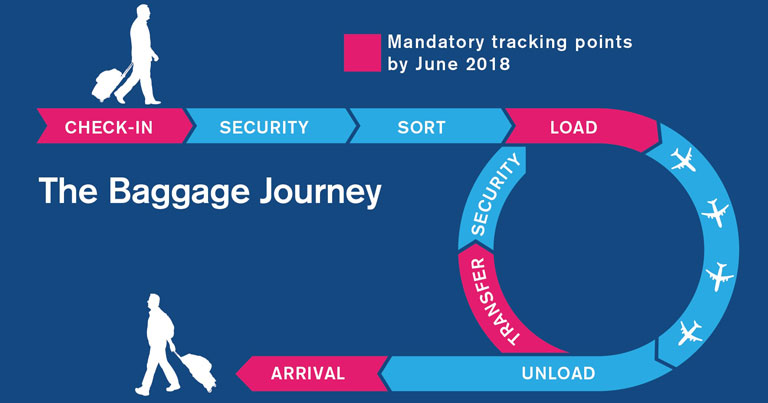
In recent years, technology has helped airlines and airports achieve record low rates of mishandled luggage. In the build-up to IATA Resolution 753, which will become effective on 1 June, this rate is expected to drop even further with airlines proactively boosting their baggage handling efforts.
Implementing new baggage tracking systems can be more complex than it first seems, as in some cases it might require changes in processes and infrastructure. That is why during the past five years since the launch of Resolution 753 in 2013, IATA, in collaboration with Airlines for America (A4A) and Airports Council International (ACI) World, has developed a series of resources such as a comprehensive implementation guide, training courses and workshops to support airlines.
Andrew Price, Head of Global Baggage Operations, IATA, told FTE: “We have introduced a service that allows airlines to have baggage tracking implementation validated at their hub of full network, leading to a certification. Our team is also working on a platform that allows airlines to see where they have tracking gaps, so that they can prioritise their tracking capability to be aligned with their operational needs.”
While some airlines have already implemented advanced technology to be able to track baggage and improve operational efficiency, others are still in the process of implementing systems to be able to do so. Price explained: “Some, like our Platinum certificate holders such as American Airlines and Delta Air Lines, are complete and others are just at the planning stage. The benefits of tracking speak for themselves, so there is no penalty needed to encourage adoption.”
RFID technology to reduce mishandled bags by 25% by 2020
So far, the industry has explored different technology approaches from digital GPS luggage tags to more premium concepts such as providing a door-to-door tracked service. However, a relatively simple solution is being implemented by some airlines already – Radio Frequency Identification (RFID) technology.
In fact, last year IATA together with SITA published a detailed business case focusing on the concept, estimating that RFID could reduce the number of mishandled bags by an extra 25% by 2020. What’s more, the research also showed that the use of RFID technology can save the air transport industry $3 billion in baggage mishandling costs.
Price highlighted three main benefits of the technology: “One of the benefit areas is related to baggage handlers. RFID frees the handlers to use both hands to handle the bag, which reduces injuries significantly. Secondly, in relation to bag tag read-rates, RFID offers a higher performance as it captures all the bags, helping to reduce baggage mishandling caused by this issue. Finally, RFID readers are easier and cheaper to deploy, making them attractive for arrivals scanning of baggage, which is the biggest current gap in tracking locations.”
He added: “RFID is the easiest way to allow automatic, hands-free, tracking information to be collected.”
Indeed, the benefits of RFID have already been recognised by industry players. A prominent example is Delta Air Lines, which in 2016 invested $50 million to deploy RFID at 344 stations.
Another example of an airline that has already achieved full compliance with IATA’s resolution is Qatar Airways at its Hamad International Airport hub in Doha. In fact, the airline became the first carrier worldwide to achieve the certification, following investment in the award-winning “HAQIBA” baggage management system, as well as its integration with the Qatar Airways website and mobile app, which provides real-time baggage-related notifications to passengers.
“The two primary identifications for baggage are barcode and RFID, but that doesn’t put a break on innovation,” Price said. “Lots of airlines are looking at optical technology to identify bags, which I think has a role to play in determining the size and colour of bags automatically. It can also help identify damage on bags, either pre-existing or to help find out where damage is caused during the journey.”
Collaborating to reduce baggage mishandling
While IATA Resolution 753 applies only to IATA’s member airlines, in many cases airlines will be seeking the support from stakeholders involved in the baggage journey such as airports and ground handlers. Resolution 753 serves as yet another example of the industry’s collaboration in investing in new technology to enhance the passenger experience and achieve operational excellency. Price said: “A bag is typically touched 13 times on a simple baggage journey, so the role of the airport and the ground handler is crucial to ensure mishandling rates continue to fall.”
Price’s vision of the future begins with baggage tracking as a short-term target, however he is already looking ahead towards times when complete automation will be available and more services and options will be introduced. He concluded: “My personal ideal baggage journey is one where travelling with a checked bag is easier than travelling with cabin luggage.”






